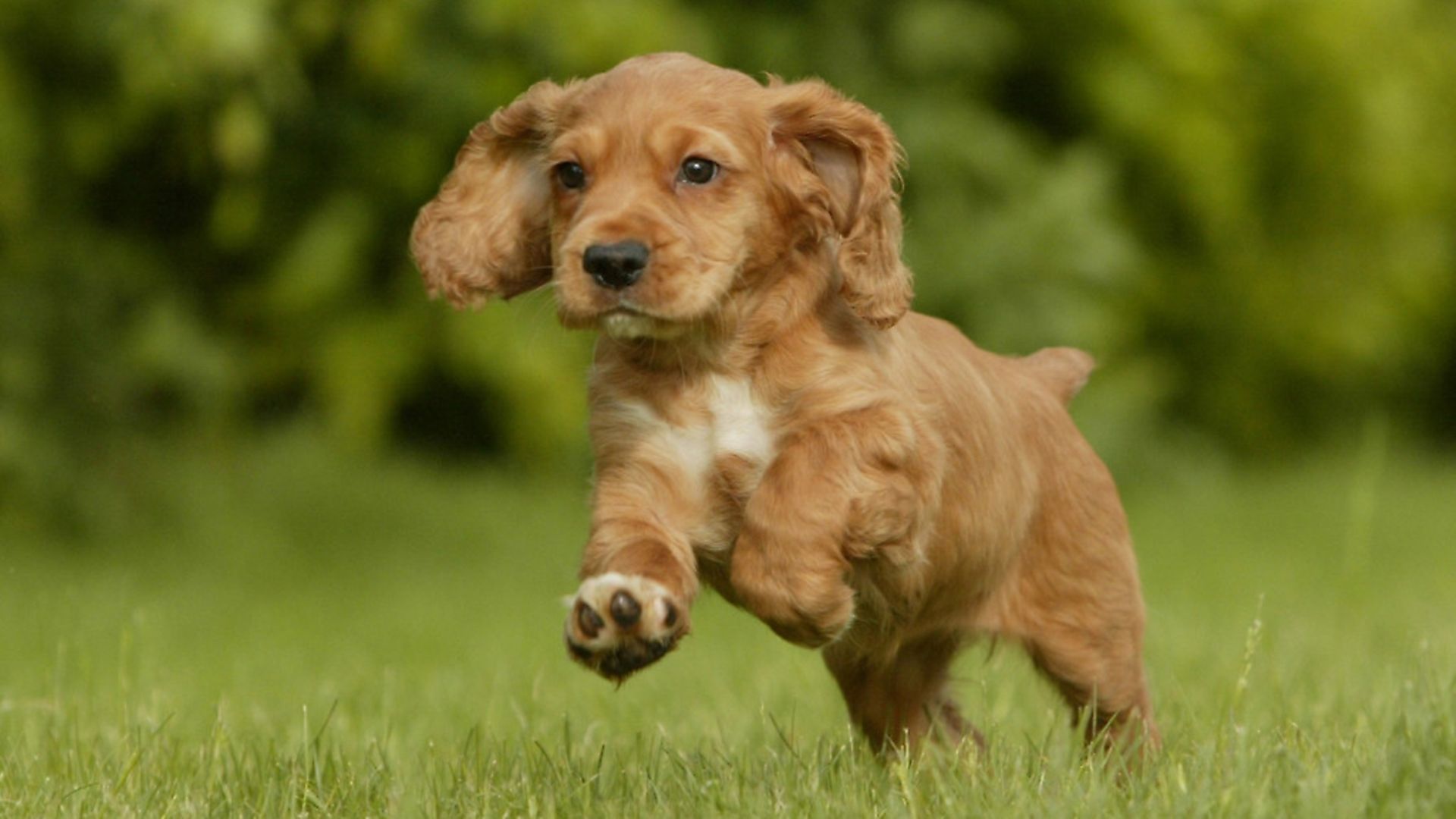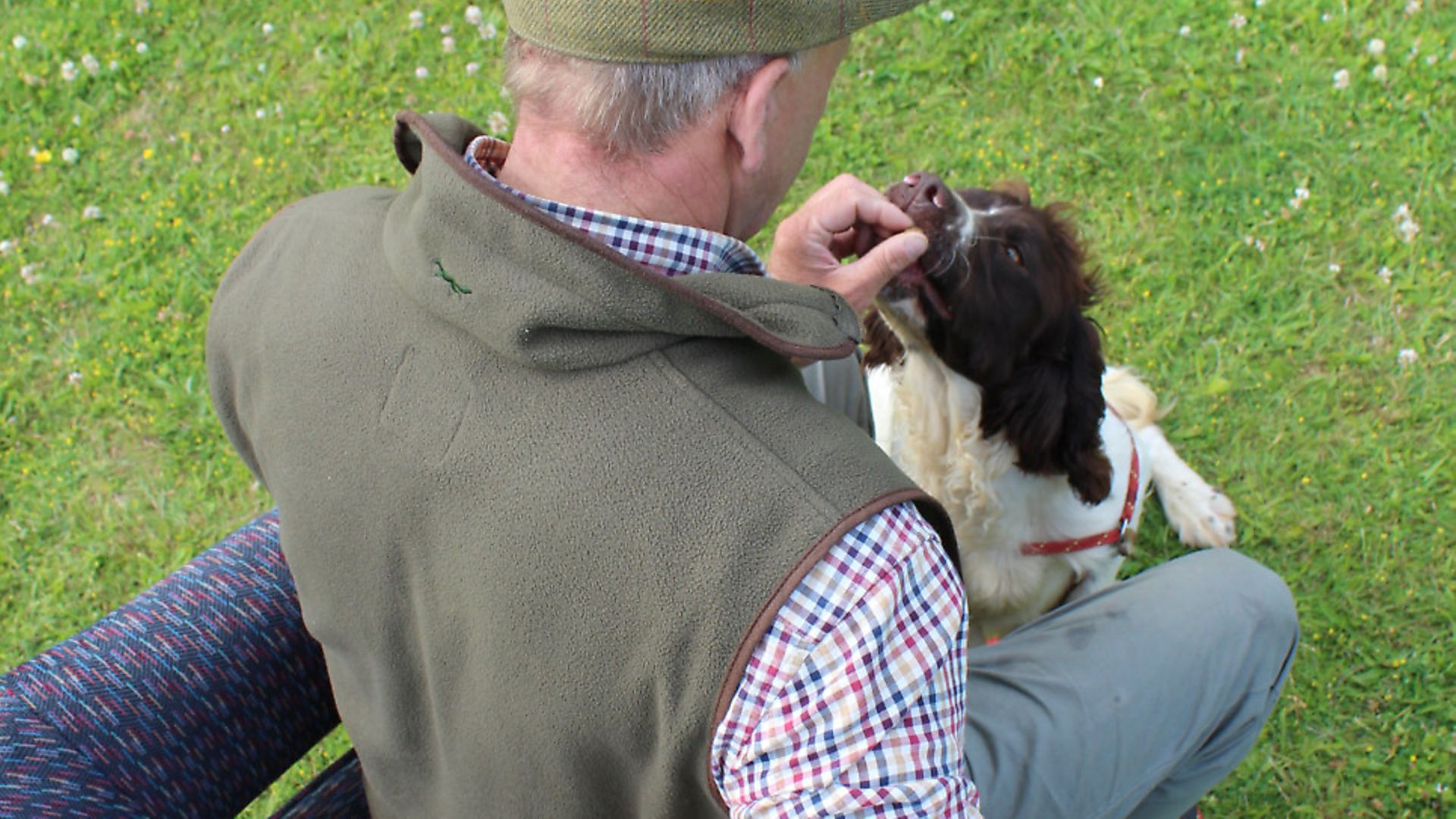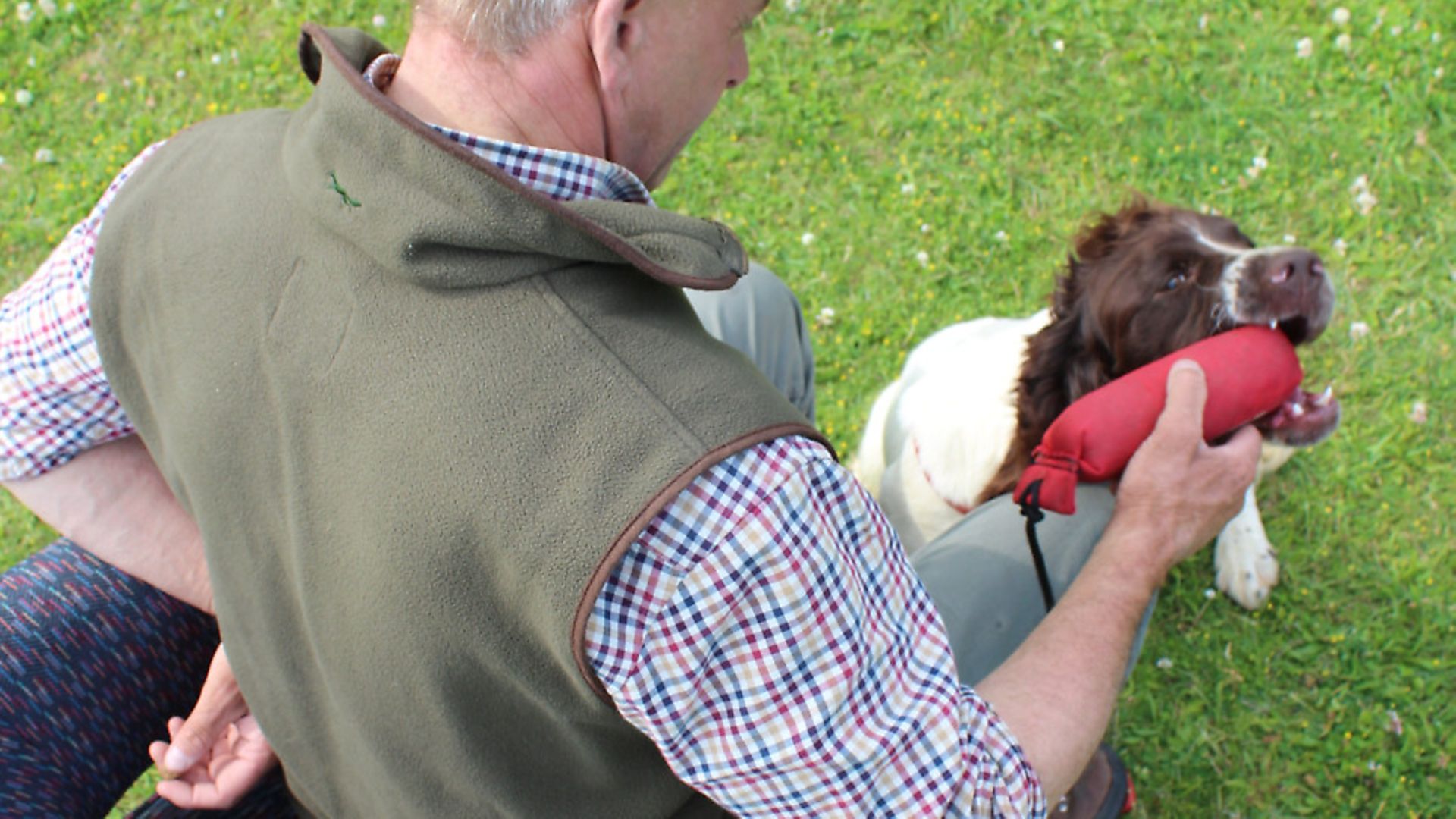Howard continues his “delivery to hand” series by focusing on dogs that tend to drop the game before they get to you... here’s how to teach your gundog the “hold”
 credit: Archant
credit: Archant
In last month’s article (read it here), we started to look at encouraging a young gundog to retrieve and deliver to hand. We talked about the importance of building a lifestyle for your dog that makes interactions with its owner fun and exciting. Some of that time will be spent chasing and catching prey. With a puppy, that means retrieving a dummy or a ball. Using this game, we will be able to motivate the puppy throughout its training.
It’s important to keep reminding ourselves that without the interest, the drive to chase and pick up the dummy, training your gundog to retrieve is very difficult. Regular readers (and thank you by the way, I get some really nice emails from readers about my articles; I’m like your puppy you know, I enjoy gentle praise) will remember that last time I assumed the pup was a keen retriever and wanted to pick up and bring things to you.
As we discussed last time, most well-bred puppies will retrieve and deliver to hand naturally. I appreciate that we are going over old ground, but capitalising on this natural ability will almost always be the best way forward. So what can we do if things don’t go to plan?
 credit: Archant
credit: Archant
THE TRAINED HOLD
Many trainers teach their gundogs to hold a dummy when commanded to do so. For the purpose of this article, we will refer to this technique as the ‘trained hold’. Some trainers use this technique from the outset, while others choose to use this in the event that the dog starts to put the dummy down. When delivered correctly, this can be a very effective technique.
Start by sitting the dog in front of you. You will need a small dummy, paint rollers are great for this job. Gently open and encourage the dog to accept the dummy into its mouth. It is really important not to frighten the dog at this point.
Once the dummy is inside the dog’s mouth, you gently command the word ‘hold’. Some dogs are very straightforward and will simply accept the dummy in their mouth. Where this is the case, continue to repeat the command ‘hold’. After a very short period of time, command the dog to release the dummy and take it from him. The words ‘dead’, ‘give’ or ‘drop’ are the obvious commands to use. The reward for this exercise comes from your tone and possibly a gentle caressing of the chest. You will need to be calm, quiet and gentle.
 credit: Archant
credit: Archant
Experienced handlers use their hands and voice to ensure the dog maintains the dummy within its mouth. After a few carefully delivered training sessions, the dog will have an understanding that the command word ‘hold’ means to do just that. As with all training, ensure you thoroughly establish this understanding before moving on to the next stage.
Now with the dummy in the dog’s mouth, we can take a few steps backwards, encouraging the dog towards us as we do. Using a familiar and gentle tone, say ‘hold’ until the dog reaches you, at which point take the dummy from the dog saying ‘dead’.
Gently and quietly praise the dog for his actions. My word, that was a quick and easy fix, wasn’t it? It all sounds pretty straightforward written down, but unfortunately things aren’t always that easy. The most likely thing to happen is that the dog will reject or let go of the dummy. If he does, gently but firmly replace the dummy into the dog’s mouth. Quietly praise while the dummy is in his mouth. You will need to be gentle but insist that the dummy stays in the dog’s mouth. If at any point during this exercise you frighten the dog, this technique will become difficult to use.
The term ‘forced hold’ is sometimes used to describe this training technique. In my opinion, this term encourages the wrong approach and techniques. We are looking to teach the dog that he must hold the dummy to gain your praise and approval. You will need to be clear and consistent, but firm.
 credit: Archant
credit: Archant
By far the best way to learn this technique is to watch and study under an experienced trainer. In fact, I strongly recommend that you don’t attempt this technique until you have done just that.
 credit: Archant
credit: Archant
FOOD REWARDS
When faced with a situation where your dog is failing to deliver to hand, or worse still is a reluctant retriever, you might wish to look at this next technique. We are going to use food rewards to encourage the dog firstly to hold a dummy and secondly to retrieve it.
You will need some tasty food treats, a comfortable chair to sit in, a dummy (or paint roller!) and, of course, your dog.
Firstly, sit on the front edge of a chair with enough room behind you to place the dummy and your feed treats on the chair. Call your dog to you and encourage him to sit facing you with his feet between your legs.
Put both your hands behind your back and quietly secure the dummy in one hand and a feed treat in the other. Then, bring the dummy from behind you and present it to the dog. Instinctively, the dog will investigate with his nose, and as he touches the dummy, say the word ‘good’. Now use your other hand to feed a treat instantly.
While you are treating the dog, remove the dummy and put it behind you again. Allow a few seconds before repeating the exercise. If the dog doesn’t respond to the dummy within a few seconds take it away, pause and re-present.
Repeat the touch and reward up to a maximum of 10 times then finish the exercise. Repeat this exercise two or three times a day and the dog will quickly learn to make contact with the dummy in order to get the reward.
As a general rule of thumb, we are going to layer this behaviour up. Firstly, we need a nose touch, then lips, teeth, and next the dummy goes into the mouth. To get the dog to offer the next level up, you must first ensure that the dog is quick and direct with the nose touch. Don’t reward if he is lazy and and just gestures without contact.
Now you have established this new behaviour, we simply withhold the reward until the dog offers something more. Be patient, simply hold the dummy in front of him and it is likely that frustration will goad him to grab at the dummy. Bingo! Say ‘good’ and reward; this is now the new behaviour that will give the dog a reward.
Slowly but surely we layer up the behaviour until the dog is taking the dummy into its mouth and holding. Only now do we overlay a command word: ‘hold’ is an obvious choice!
CONTINUING WITH THE ROUTINE
Once the dog has been trained to understand the ‘hold’ command, we can use this word to further develop a retrieve and delivery to hand. Instead of offering the dummy to the dog, drop it at his feet and command ‘hold’; most will reach down and pick up the dummy. From here, we can throw it a few metres and once again give the command.
Try sitting the dog about 5m in front of you and gently pitch the dummy halfway between you both. Let the dog run in, commanding ‘hold’ as it does. Getting the dog facing and close to you as it makes its retrieve can be helpful with dogs that are reluctant to bring the dummy back.
It may be easier said than done, but it is important that you get things right first time. Of course, there’s some margin for error and you need to experiment a little, but try to remember that it’s easy to confuse and frighten a dog. Ensure you are building a partnership based on communication, understanding and trust. Do your upmost to see things from the dog’s point of view. Be kind, have fun and keeeeep training!